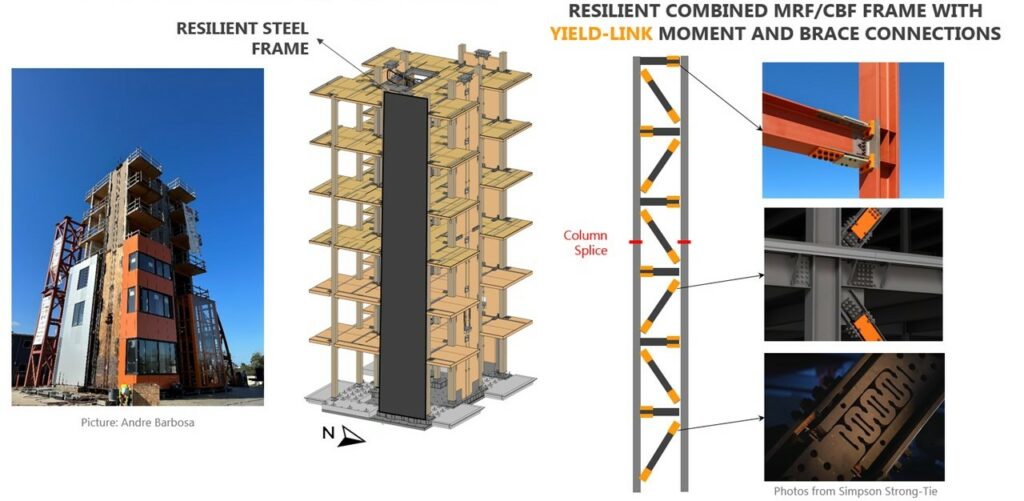NHERI Converging Design

The NHERI Converging Design project is a NSF-funded research effort with collaboration from Oregon State University, Colorado State University, Stanford University, and Penn State University. The vision of this project is to create a new design paradigm within structural engineering that employs multi-objective optimization to maximize functional recovery while integrating additional sustainable building design principles. This design methodology will be validated through shake-table testing of a full-scale six-story mass timber structure at the NHERI@UCSD outdoor facility.
This six-story specimen emerged from a previously tested ten-story shake-table specimen led by the Dr. Shiling Pei and the NHERI TallWood team where the top four stories were deconstructed to leave a six-story specimen for the NHERI Converging Design team (phase 0). At the completion of deconstruction, the six-story structure will be subject to three distinct phases of shake-table testing that include different lateral force resisting systems (phase 1-3) that are outlined below:
Phase 0: Deconstruction
The top four stories were deconstructed from the NHERI TallWood ten-story specimen for the NHERI Converging Design six-story test specimen.
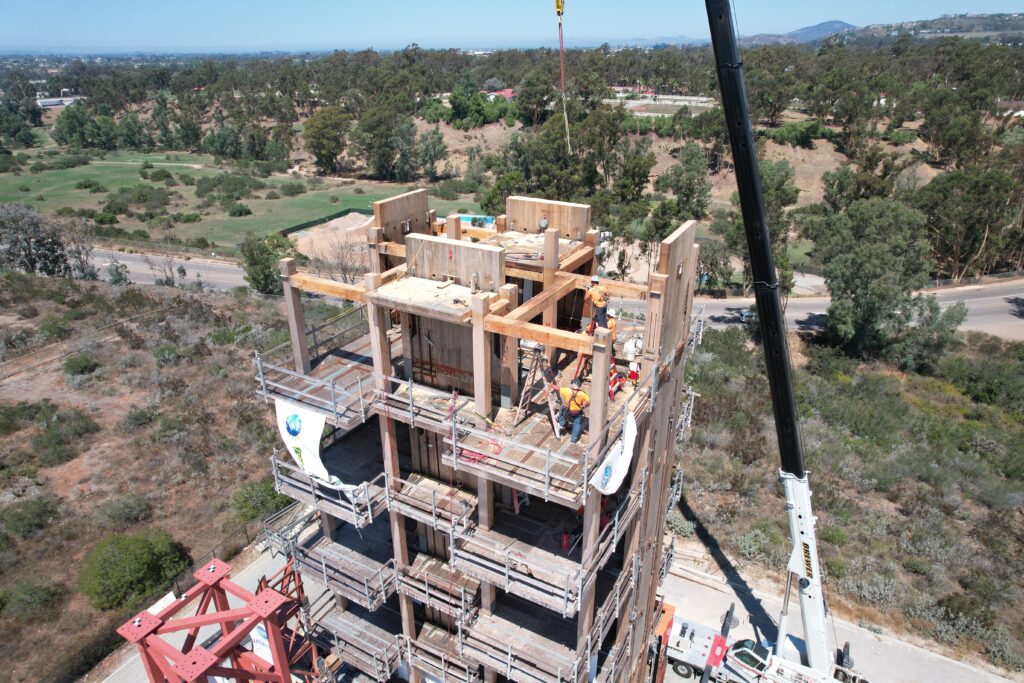
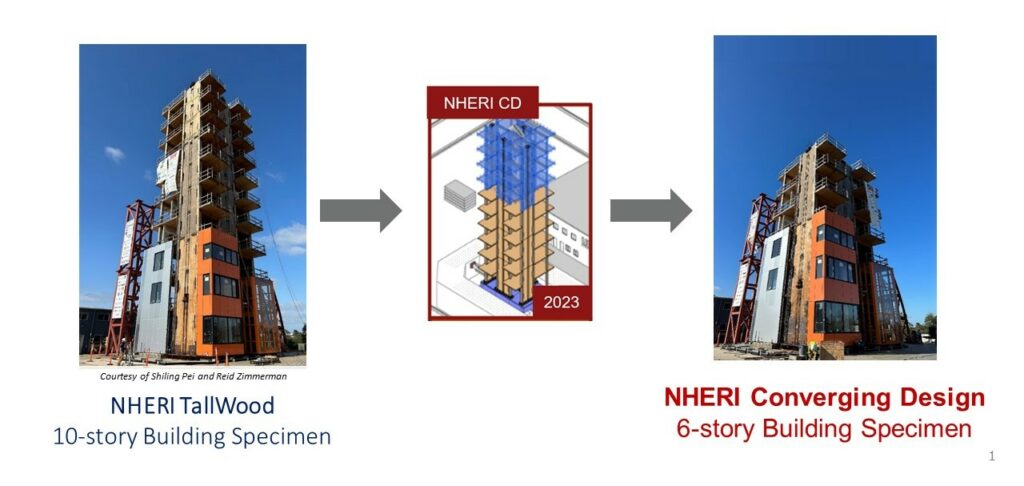
NHERI Converging Design Phase 1
The first phase of testing will feature U-shaped flexural plates (UFPs) as energy dissipators bounding post-tensioned mass timber rocking walls to serve as the lateral force-resisting system.
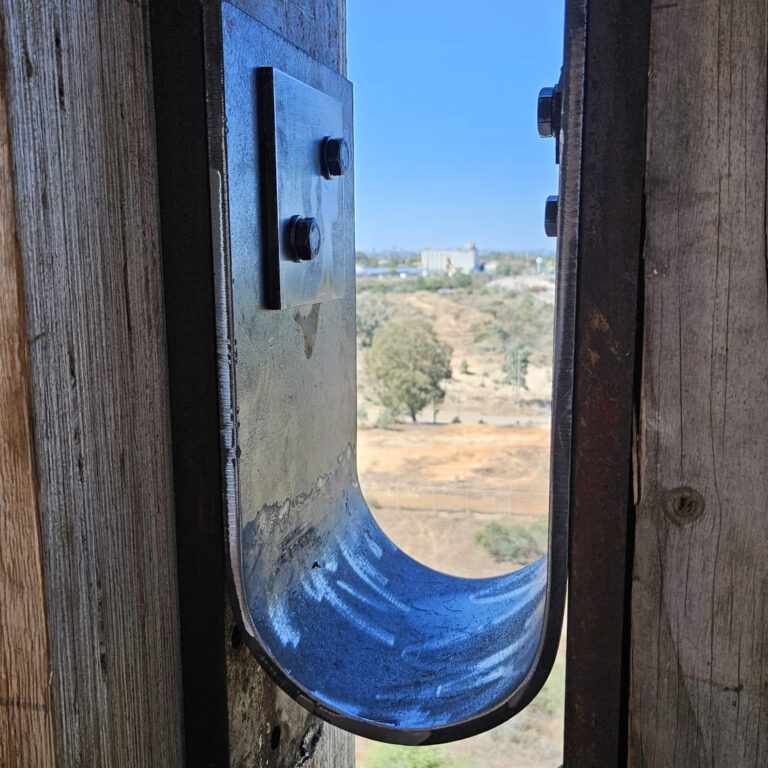
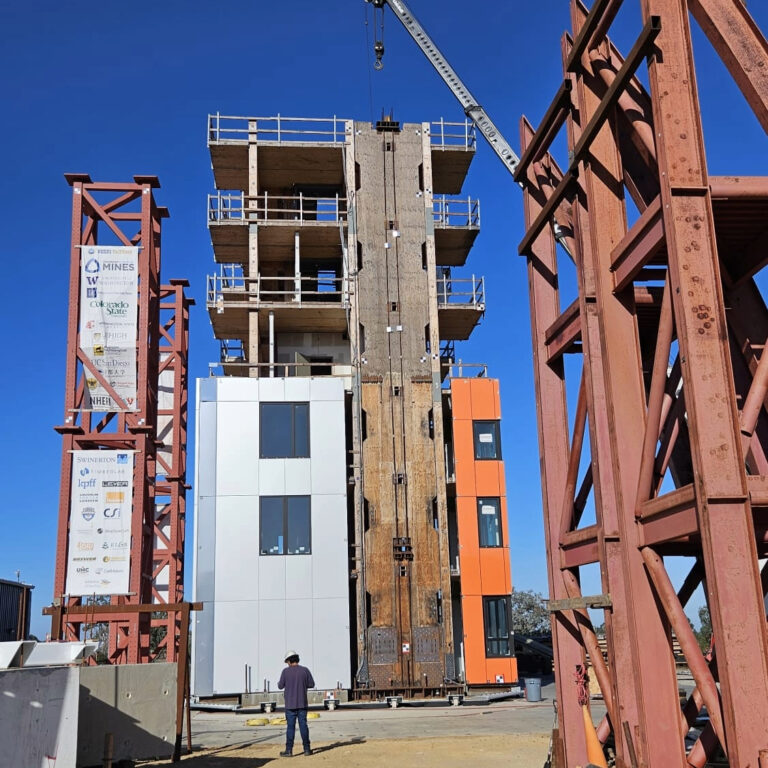
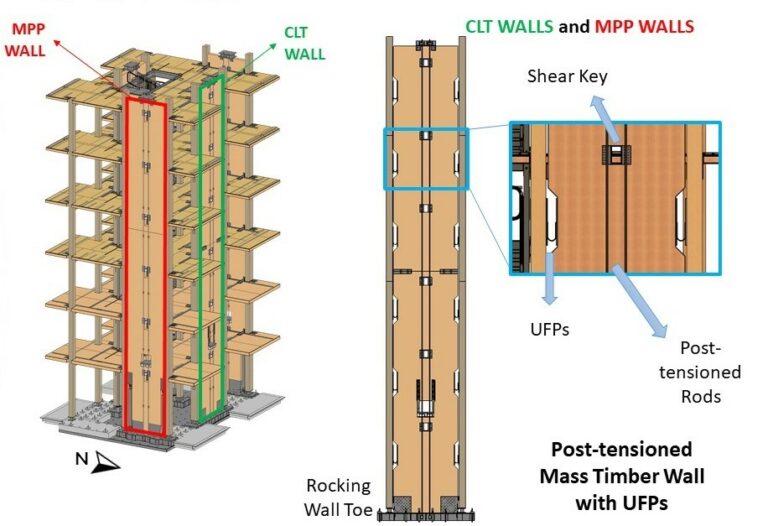
NHERI Converging Design Phase 2
The second phase of testing will feature buckling-restrained braces (BRBs) as energy dissipators at the base of post-tensioned mass timber rocking walls to serve as the lateral force-resisting system.
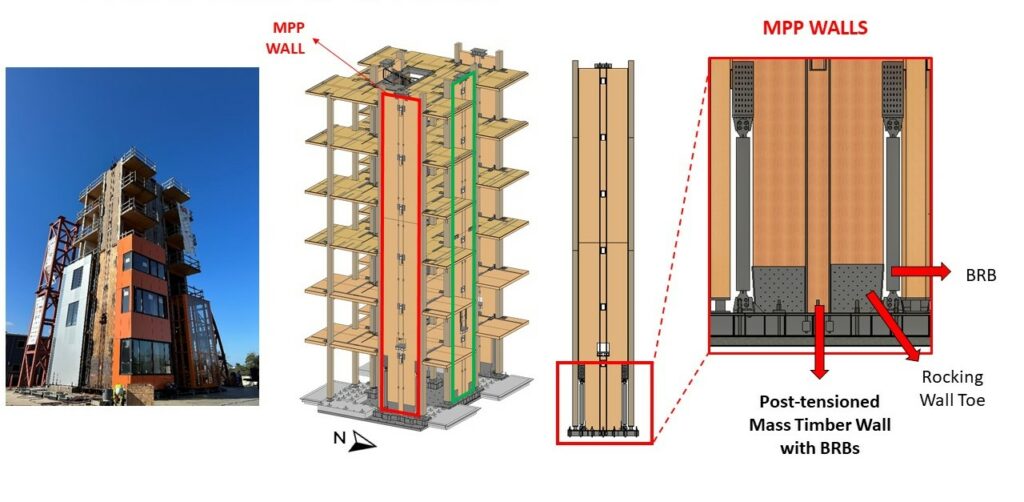
NHERI Converging Design Phase 3
The third phase of testing will feature yield link brace connection from Simpson Strong-Tie in exploration of hybrid steel mass timber structural system solutions.
